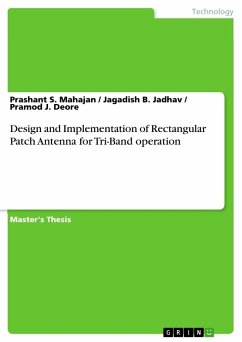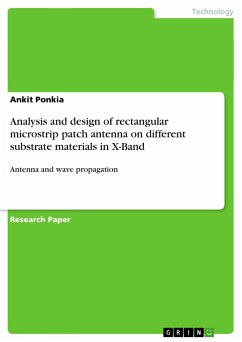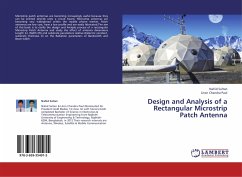Master's Thesis from the year 2013 in the subject Electrotechnology, grade: First Class, , course: Master Of Engineering, language: English, abstract: In today's modern communication industry, antennas are the most important components required to create a communication link. Microstrip antennas are the most suited for aerospace and mobile applications because of their low profile, light weight and low power handling capacity. These antennas can be designed in a variety of shapes in order to obtain enhanced gain and bandwidth for dual band and tri-band operation. This book focus on a detailed study of how to design and simulate a microstrip fed rectangular patch antenna using IE3D software with effect of antenna dimensions length ( L ), width ( W ), relative dielectric constant , substrate thickness (t ) on the radiation parameters of bandwidth and gain. The design parameters of the antenna calculated using the transmission line model. Here antenna operates for tri- band operation, the operating bands are GSM , PCA and UTMS for antenna geometry -I and WLAN and WiMAX for antenna geometry -II. The fractional bandwidths (FB) after simulation obtain under criterion ( S_11 < -10 dB) are 6.45% for GSM [890-960 MHz], 4.25% for WLAN [2.40 - 2.51 GHz], 6.89% for PCA [1850-1990 MHz], 11.42 % for WiMAX [3.35 - 3.94 GHz], 9.09% for UTMS [1920-2170 MHz] and 18.18% for WLAN [5.02 - 6.63 GHz] and peak gain 2.43 dBi at 5.36 GHz.








